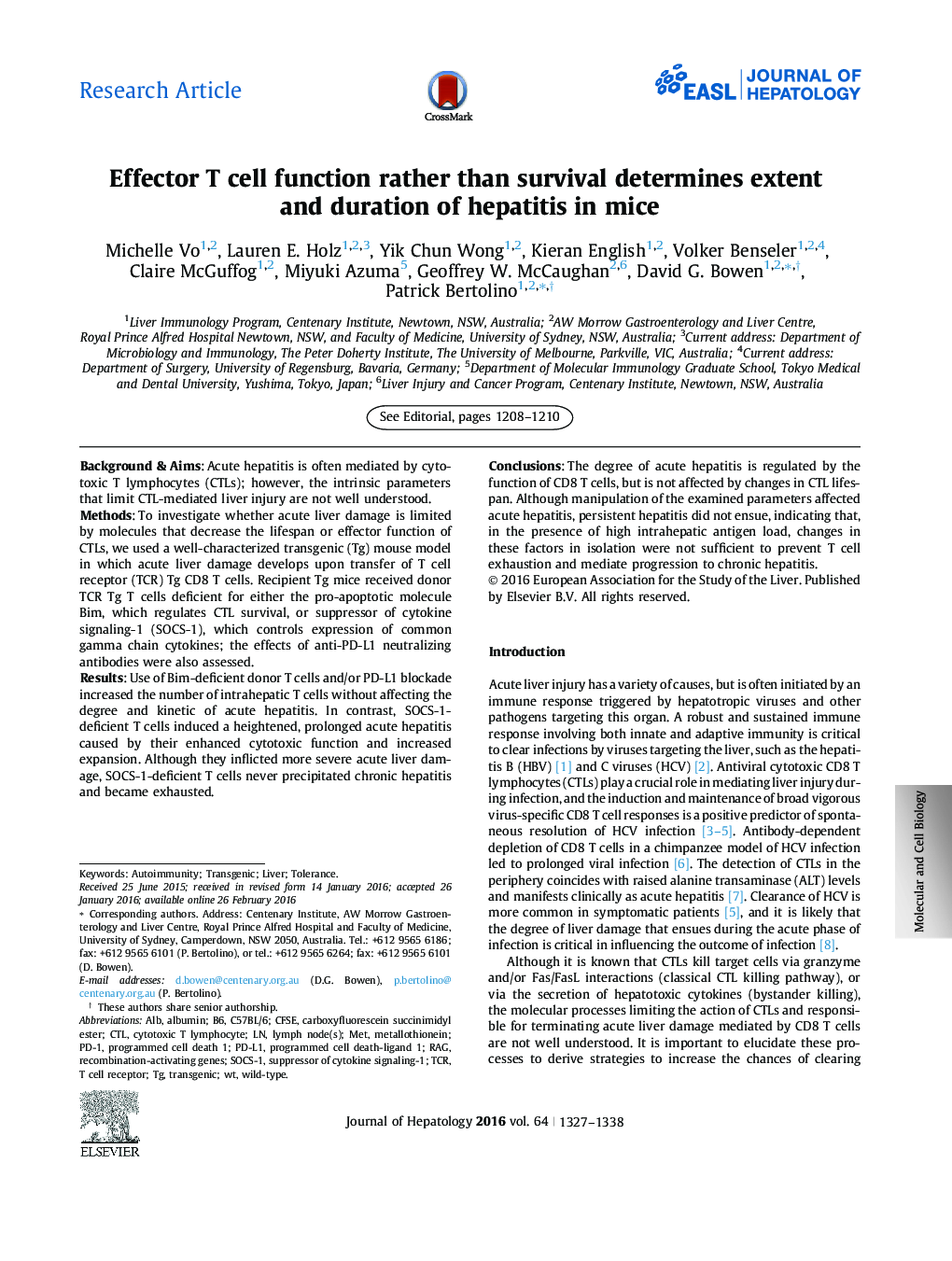| Article ID | Journal | Published Year | Pages | File Type |
|---|---|---|---|---|
| 6102139 | Journal of Hepatology | 2016 | 12 Pages |
Background & AimsAcute hepatitis is often mediated by cytotoxic T lymphocytes (CTLs); however, the intrinsic parameters that limit CTL-mediated liver injury are not well understood.MethodsTo investigate whether acute liver damage is limited by molecules that decrease the lifespan or effector function of CTLs, we used a well-characterized transgenic (Tg) mouse model in which acute liver damage develops upon transfer of T cell receptor (TCR) Tg CD8 T cells. Recipient Tg mice received donor TCR Tg T cells deficient for either the pro-apoptotic molecule Bim, which regulates CTL survival, or suppressor of cytokine signaling-1 (SOCS-1), which controls expression of common gamma chain cytokines; the effects of anti-PD-L1 neutralizing antibodies were also assessed.ResultsUse of Bim-deficient donor T cells and/or PD-L1 blockade increased the number of intrahepatic T cells without affecting the degree and kinetic of acute hepatitis. In contrast, SOCS-1-deficient T cells induced a heightened, prolonged acute hepatitis caused by their enhanced cytotoxic function and increased expansion. Although they inflicted more severe acute liver damage, SOCS-1-deficient T cells never precipitated chronic hepatitis and became exhausted.ConclusionsThe degree of acute hepatitis is regulated by the function of CD8 T cells, but is not affected by changes in CTL lifespan. Although manipulation of the examined parameters affected acute hepatitis, persistent hepatitis did not ensue, indicating that, in the presence of high intrahepatic antigen load, changes in these factors in isolation were not sufficient to prevent T cell exhaustion and mediate progression to chronic hepatitis.
Graphical abstractDownload high-res image (105KB)Download full-size image
